Paris Fashion Week’s Ones to Watch for Fall 2023
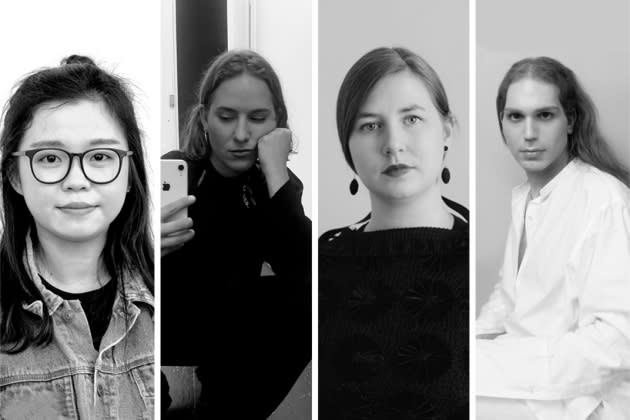
PARIS — Floating tables, falling petals and handcraft are what got the creative motors going of the latest designers to throw their hats in the Paris Fashion Week for fall 2023.
Marie Adam-Leenaerdt
“I’m inviting everyone to my birthday,” quipped Belgian designer Marie Adam-Leenaerdt, who showed her first collection Monday, on the day she turned 27.
More from WWD
For this Brussels-born and raised graduate of La Cambre Mode(s), who cut her teeth at Givenchy and Balenciaga before quickly striking out on her own, this first collection is something of a creative manifesto.
“Clothes don’t come from nowhere,” she said, naming the heritage of conceptual Belgian fashion and its reflection on each garment’s history, structure and usage as her primary creative motivation.
In a nod to La Cambre’s method of unpicking clothes to help students understand and master their structure, Adam-Leenaert wants to take apart fashion’s habit of doing things by rota, even codes that feel difficult to entirely throw off, especially early in one’s career.
“My idea is to think about the whole fashion ecosystem, through the pieces from a conceptual standpoint but also through its usages, so I try to create surprise and provoke further thought by starting with familiar objects,” she said.
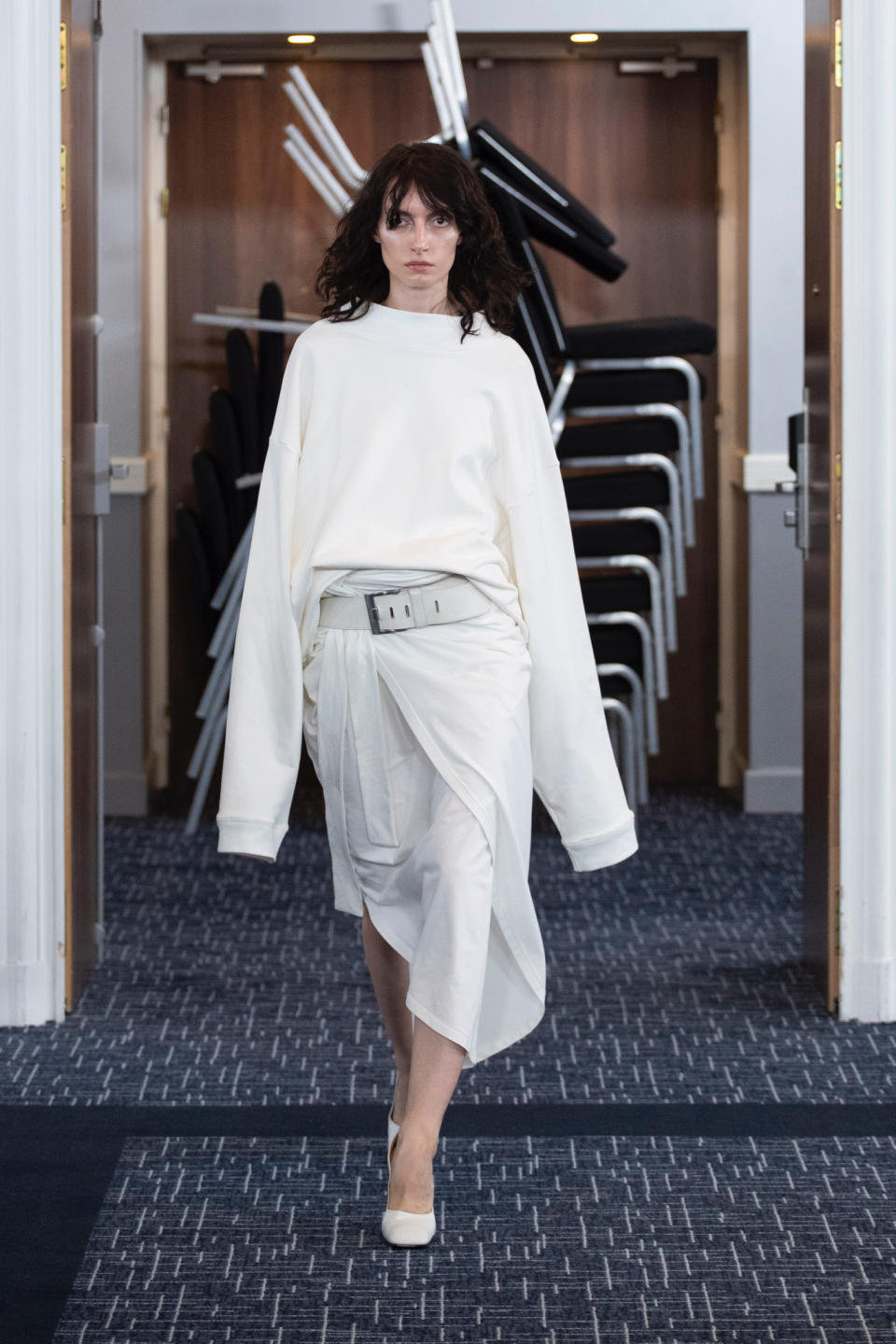
Retail prices will start around 250 euros for simple blouses and 500 euros for tailored slacks and up to 3,500 euros for her most complex dresses. Shoes will sit between 450 and 1,900 euros while handbags will range from 1,000 to 4,500 euros, as Adam-Leenaerdt considers no silhouette is complete without accessories.
Another fashion usage she intends to question is trends and seasonality. Call it being more sustainable but for Adam-Leenaerdt, that’s just being smart and choosing items that can go the extra mile, like a classic-looking reversible pencil skirt or thigh-high boots that can be unzipped at knee and ankle height.
“I don’t want to change everything every six months. I’d rather be like a furniture designer, adding [new items] as needed,” she said.
That’s also why Adam-Leenaerdt may not stay in one creative lane for long. “I work in garments today, but there are plenty of other areas I’m interested in,” she says, naming furniture and food as potential further fields.
Róisín Pierce
“What is really brilliant about textiles and craft is the process, and that’s wildly inspiring to me,” said Irish designer Roisin Pierce, who was a finalist for the 2022 LVMH Prize and won the 2019 Hyères International Festival of Fashion, Photography and Fashion Accessories.
A graduate of Dublin’s National College of Art and Design textile design program, Pierce was drawn to fashion’s innate escapism and ability to tell a story through clothing, eventually falling in love with crochet and craft-making in her late teens.
Owing to her desire to strive for newness through craft, particularly those that have been passed down through the generations in her homeland, she is particularly interested in the cultural significance of the crafts she works with and continuously delves into the history and origins of lace-making, which was “made by the poor for the rich,” she explained.
She describes her namesake brand as telling a feminist backstory to craft, particularly as “Irish [ones] are female-dominated and was Ireland’s biggest industry during the [19th-century] famine,” explained the designer, pointing out their role in providing families an income and perhaps even passage to the U.S. at the time.
While she lets the process guide her in developing shapes and silhouettes, Pierce said her collections are mood-driven. The initial two collections stemmed from anger at the history of the Magdalene Laundries, where Irish traditional lace- and garment-making were occupations deemed acceptable for women and forced upon many of them. Her third delved into the way happy childhood memories shine in one’s recollection.
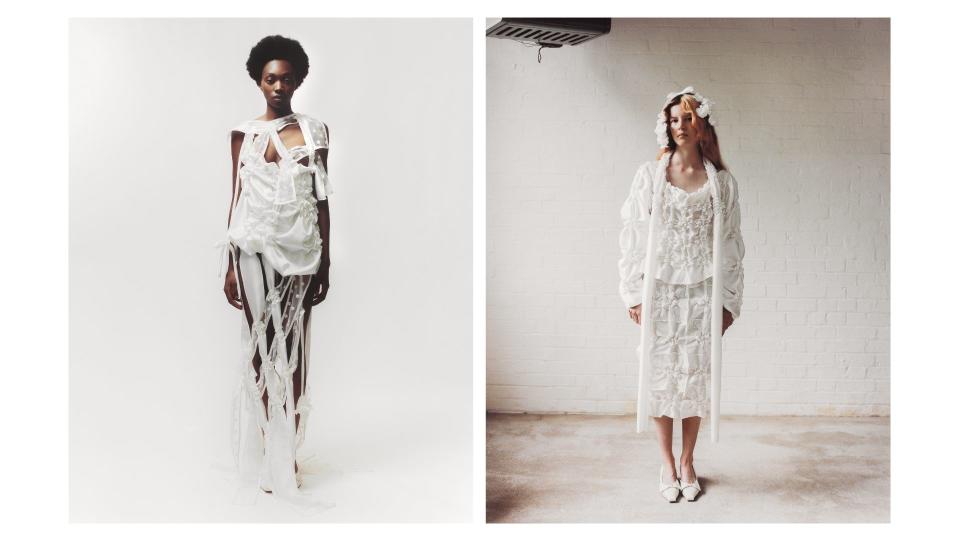
Woven throughout is a desire to explore the tension between fragility and strength, expressed as strong structures executed through delicate techniques, and recognizing the “people in fragile positions’ immense strength” in whose hands these crafts originated, she said.
Congruent with her idea that such techniques can be renewed, Pierce has also spent the last year dispensing classes to small groups of young Irish women to ensure practice continues for a new generation.
A zero-waste angle has emerged in her work, through using ruching techniques to avoid cutting fabric swatches to size and creating unusable offcuts.
Now in her fourth collection for fall 2023, Pierce once more delves into her homeland’s difficult relationship with femininity, in particular “the fear of women and lengths [taken] to silence them.”
Her exploration of delicate flittering napkin embroideries and further developments on smocking techniques will also be layered with her emotional response to the work of a multidisciplinary creative whose work she admires, although Pierce demurred to name that person.
Simpler separates start around 400 euros, while her most craft intensive dresses and tops go for more than 2,500 euros.
Caroline Hu
“Paris is always a good idea” for Shanghai and New York-based designer Caroline Hu, who liked the humor and truth in this sentence she overheard years ago.
“There is always something sensitive about Paris Fashion Week. The business aside, the gathering of like-minded professionals, it is like an Apple Event, you have people who would both appreciate the end products and also the technique used,” a combination she finds extremely inspiring, she said.
So much so that she’d begun sketching her upcoming fall 2023 collection, one of her most sentimental to date, on the return trip from Paris to Shanghai last October. She’d been in town for the first time in three years to show her work, and between appointments, soaked up the sights, a breather that left her with “a sense of release and freedom down to [her] soul.”
Falling leaves and petals made her very emotional, touching her deeply with “a sense of all things will pass yet all things will return,” said Hu, who found “something poetic about nature’s never-ending cycle, anticipating the beginning, the beauty in seeing the purity of it.”
The designer born and raised in Shenzhen, China, traces her vocation back to an art tutor who hailed from Jingdezhen, a Southern Chinese area renowned for its porcelain production. “The thoughts and delicacy of this art intrigued me deeply and left a profound impression,” Hu recalled.
This developed into “wanting to make beautiful objects, but not just from the visual standpoint, but also from the process” standpoint and could have led to any artform, be it painting or furniture-making.
But fashion called. After completing a bachelor’s degree in womenswear at London’s Central Saint Martins followed by a master’s in New York at The New School’s Parsons School of Design, she worked at Tory Burch and Jason Wu before launching her brand in 2018.
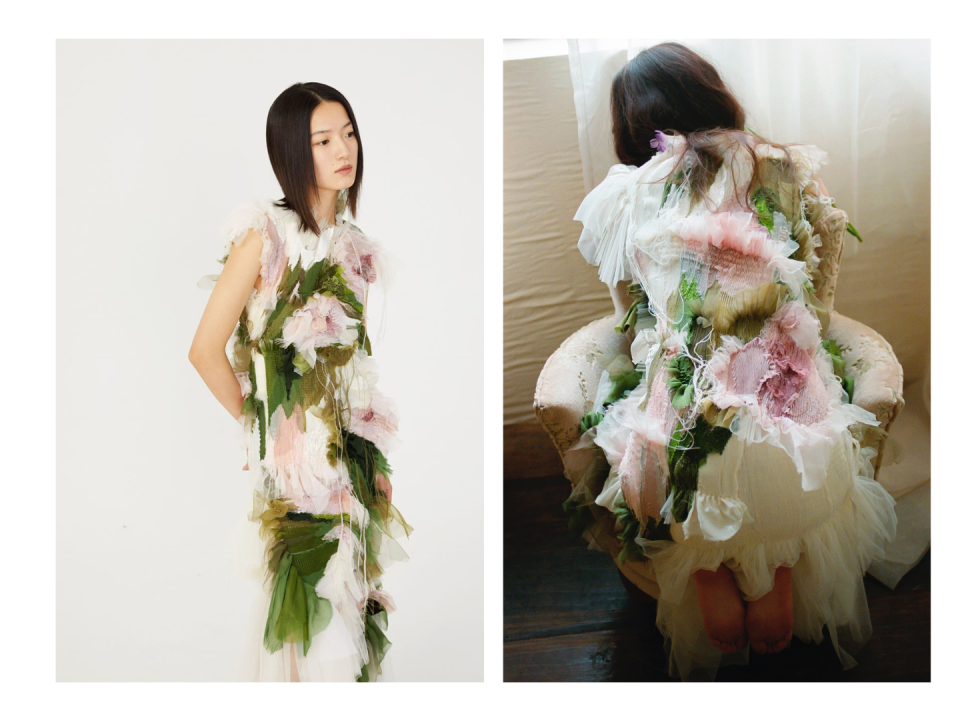
Her “delicate path between romanticism and pandemonium” quickly gained traction thanks to craft-intensive designs meant to reflect who she is at the time of creation, culminating in a spot among the LVMH Prize semifinalists within the first year, an experience she found equal parts humbling and confidence-boosting. One of her pieces has since been selected to join the permanent collection of the Costume Institute of the Metropolitan Museum of Art.
The pandemic prompted her to return to Shanghai, where she opened a studio-atelier and began delving deeper into the production and commercial sides of her budding business. “I feel lucky in that sense. Instead of blindly expanding the business, I took this time to build the foundation of the brand,” she said.
Stocked at the likes of Dover Street Market Beijing, China-based department stores SND and SKP as well as Net-a-porter, her work averages between $500 to $1,200, with craft-intensive pieces in the $1,800 to $3,500 range.
Niccolò Pasqualetti
Hailing from Tuscany’s picturesque Italian countryside, Niccolò Pasqualetti has always been surrounded by makers and people who are skilled with their hands.
Yet while the artisanal forms the bedrock of the brand, the study of contrasts is a terrain that bears exploring further, said the designer, who prefers nonbinary pronouns.
After experiences designing womenswear at The Row, Loewe and Alighieri, Pasqualetti felt it was time to really start talking about their personal history, expanding on a desire to bridge technical facets of garment construction with more artistic gestures like, say, handcrafted necklaces. That had been the first items they’d tried their hand at during lockdowns spent at home in Tuscany.
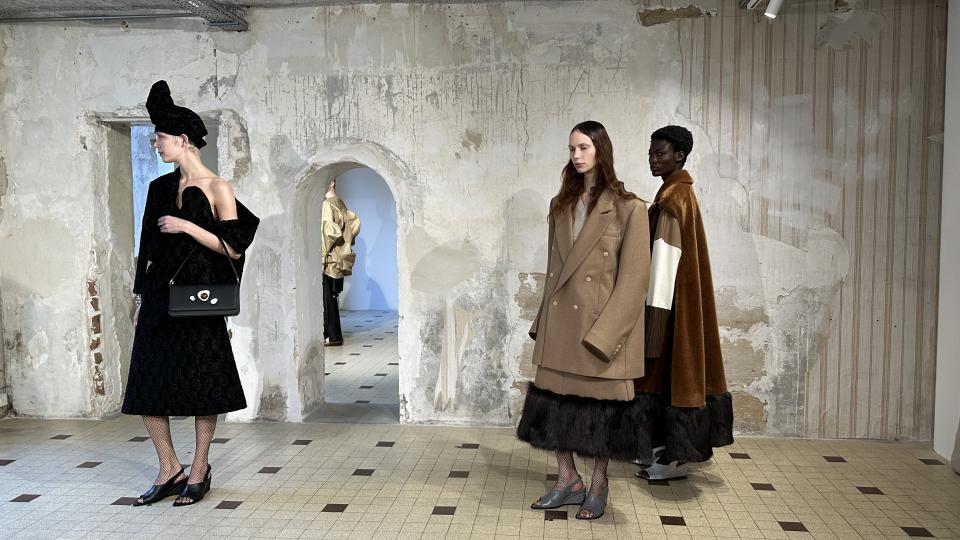
“I wanted to combine my interest for fine arts and [explore] how I could translate these shapes and forms I was doing into [items] that could be wearable every day,” they said. Gender neutrality was stemmed from Pasqualetti’s desire to offer the kind of wardrobe they desired but could not find off the racks, but also from fitting these designs on different body types.
And for all that slow and steady approach, Pasqualetti took a leap by applying to the 2022 LVMH Prize with only one eponymous collection under their belt — plus their graduate collection. But the daring move paid off, netting them a spot as a semifinalist.
Now in its fourth collection, the designer’s label explored the idea of a silhouette, or rather the mental imprint it leaves in our memories.
Pasqualetti’s knack for dichotomies came through in textural contrasts between natural and synthetic materials, many of them deadstock, but also their indiscriminate use of tenets of men’s and women’s wardrobes. The former brought an emphasis on tailoring and well-defined shoulders, while sequins and swishing fringes were owed to the latter. Proportions were skewed
Retail prices start around 140 euros with T-shirts, the brand’s bestselling trouser-skirt hybrid and intricately knotted tops hover around the 850-euro mark, while coats go around 3,000 euros.
Best of WWD

